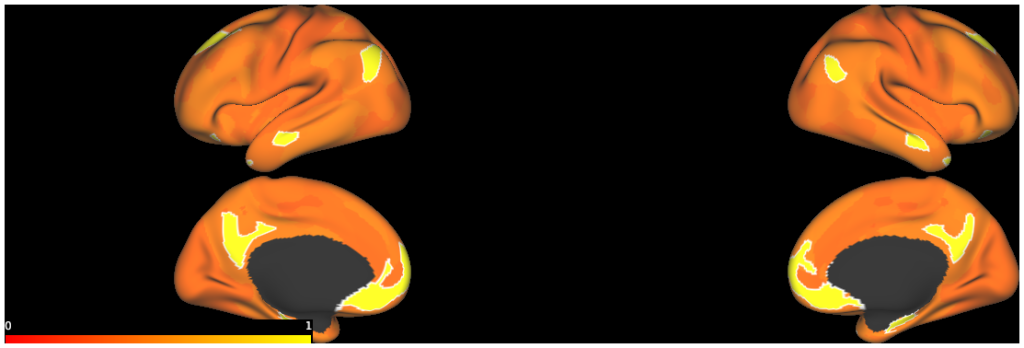FULL TITLE:
Impact of ICA Dimensionality on the Test-Retest Reliability of Resting-State Functional Connectivity
SPECIES:
Human
ABSTRACT:
As resting-state functional connectivity (rsFC) research moves toward the study of individual differences, test-retest reliability is increasingly important to understand. Previous literature supports the test-retest reliability of rsFC derived with independent component analysis (ICA) and dual regression, yet the impact of dimensionality (i.e., the number of components to extract from group-ICA) remained obscure in the current context of large-scale datasets. To provide principled guidelines on this issue, ICA at dimensionalities varying from 25 to 350 was applied to the cortical surface with resting-state functional magnetic resonance imaging data from 1003 participants in the Human Connectome Project. The reliability of two rsFC measures: (within-component) coherence and (between-component) connectivity was estimated. Reliability and its change with dimensionality varied by network: the cognitive (frontoparietal, cingulo-opercular, dorsal attention, and default) networks were measured with the highest reliability which improved with increased dimensionality until at least 150; the visual and somatomotor networks were measured with lower reliability which benefited mildly from increased dimensionality; the temporal pole/orbitofrontal cortex (TP/OFC) network was measured with the lowest reliability. Overall, ICA reliability was optimized at dimensionalities of 150 or above. Compared with two popular binary, nonoverlapping cortical atlases, ICA and dual regression resulted in higher reliability for the cognitive networks, lower reliability for the somatomotor network, and similar reliability for the visual and TP/OFC networks. These findings highlight analytical decisions that maximize the reliability of rsFC measures and how they depend on one’s networks of interest.
- Yizhou Ma
- Angus W. MacDonald III
- University of Minnesota



